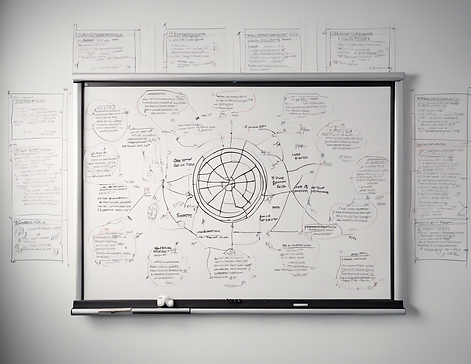

Creating Content Through The Lens Of Education
Content creators online are becoming a trusted go-to source for knowledge and expertise in today's digital world. The internet naturally facilitates this transition and has allowed online content creators to have a much greater reach and become much more influential. This decentralisation of the creation of knowledge is an important step away from some of the challenges found in conventional centralised knowledge generating institutions, such as universities. Although it is a fantastic opportunity, content creators should be held accountable for the quality of the content they create. For content creators who are making educational content, it is important to maximise the educational benefits consumers of their content receive.
When creating content, it is a good idea to have a curriculum. A curriculum, also known as a syllabus, is the the content (the What) and the pedagogical approaches (the How) used to deliver that content. An explicit curriculum provides an overarching guide during the content creation process. Utilising tried and tested approaches and systems on the What and How of your content can save time and greatly improve the overall quality of your content as well.
Below are some questions an educator may ask themselves when considering the content they are creating.




Are any known theories of teaching and learning applicable here?
Are a variety of mediums and activities used to keep the content interesting and engaging?
Is there an optimal sequence to the content?
Are the learning outcomes clearly defined and the content and activities targeted towards achieving them?
Have approaches such as spaced-repetition and reflective questioning been incorporated to help consumers internalise the content?
Are the activities cognitively engaging or are they mechanical in nature?

A Closer Look At How We Can Help
There is a multiplicity of models and frameworks, theories and approaches in the field of education that can guide and assist you in creating content. New content can consist of knowledge and/or skills the content creator is teaching others about. There are numerous benefits to be gleaned by deploying the science of education to your content. Perhaps one of the greatest benefits to be conferred, is once some of these principles are in plan there will be structure to your content creation, greatly reducing stress and saving time.

The Long-Term Plan
Right from the get-go, the goal and purpose of your content should be known. With this in mind, a long-term plan of what you want to deliver should be known and sequenced. This sequence should be logical and progressive where possible. Once a long-term plan is in place, your daily actions have a purpose.
Specified Learning Outcomes
Learning outcomes are what you want your learners to know by the end of a video, a chapter or part of your course. This could be knowledge and/or skills. Learning outcomes can be broken down into the component parts that would need to be acquired in order to achieve the learning outcome. This can then be used to filter what should or shouldn't be included in the content to make it more concise.


Educational Cycles / Models / Frameworks
Learning cycles provide a sequence of steps to allow learners to engage with content. There are many different learning cycles, but they often follow a similar pattern:
1. Encounter new content
2. Engage with new content
3. Explore new content
4. Apply new content
5. Evaluate new content
Cognitive Demand of Tasks
Activities/tasks can help learners of content internalise what they are trying to learn. Tasks can be designed to require different amounts of work from the brain. Tasks can then be sequenced in a progressive manner to assist the learning process. Tasks can vary from the simplest - copying, all the way to the most advanced - creating.

Benefits Explained

Stress
Not knowing what to do can be stressful. What competencies do you want your content consumers to take away from your content? Which order should the content be presented in? What activities and tasks could help engage your content consumers?

A Leonine Solution
Structuring your content like a curriculum gives you an overarching view of what needs to be covered. Having learning objectives and success criteria for each piece of content can guide what should be included and what activities help meet the objectives. Applying standardised models and frameworks provides a repeatable format for each piece of content to follow. Having these elements of content creation and delivery already present can greatly reduce what you worry about.

Time
Worrying about the content and the delivery of it can be stressful. However, in addition to the stress, a lot of time can be wasted thinking about what to do and how to do it. This can lead to procrastination and the content creator, that's you, finding the process taxing and unenjoyable.

A Leonine Solution
Deploying the existing theories and approaches in education can remove a lot of the thought processing that has been sapping your time, detracting from the quality of the content you are delivering. Using known models and frameworks can automate parts of the creation and delivery process, letting you focus on what matters most to you.

Maximise Consumer Benefits
Using more interactive and engaging approaches to your content can help your content conusmers internalise more and have a more psoitive experience.

A Leonine Solution
If your content consumers are enjoying their learning more and actually learning more as well, they are more likely to reproduce the competencies you are trying to teach them. They are also more likely to speak more positively about your content, therefore potentially increasing the number of people that consume your content.
